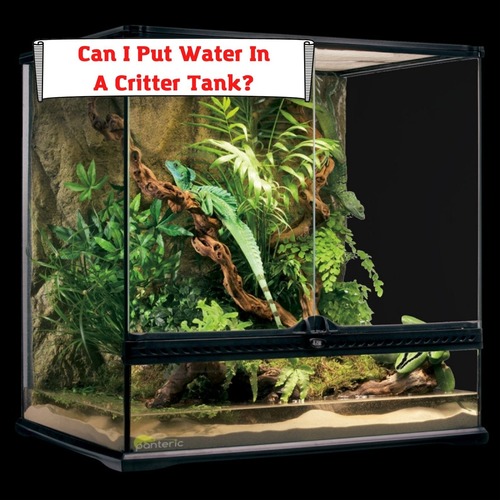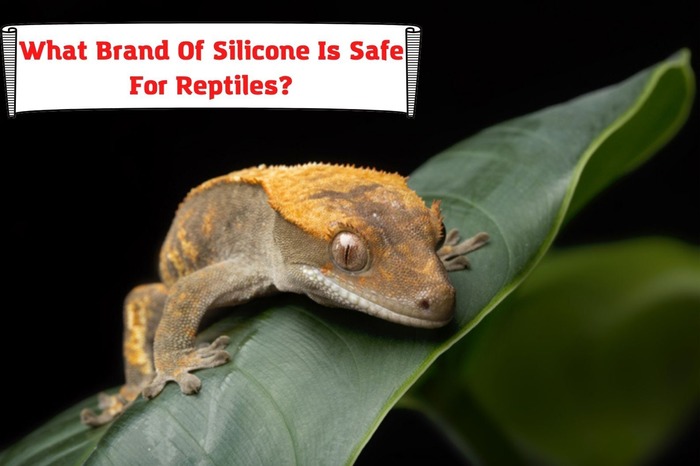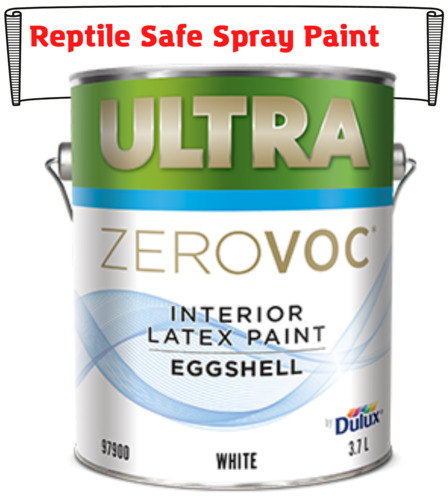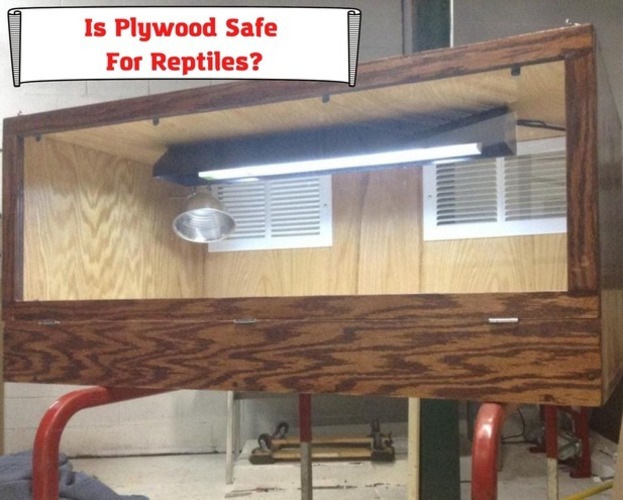Leopard geckos are reptiles but require a higher level of care than other reptiles in the pet reptile hobby. Hence, a responsible gecko owner must always do adequate research to decide what is best for his pet, especially when considering a suitable and safe dig box for it.
If you are a responsible pet owner needing practical information, here is an article that discusses some of the most important things to consider when choosing or making a leopard gecko dig box.
Read on to learn everything you need to know.
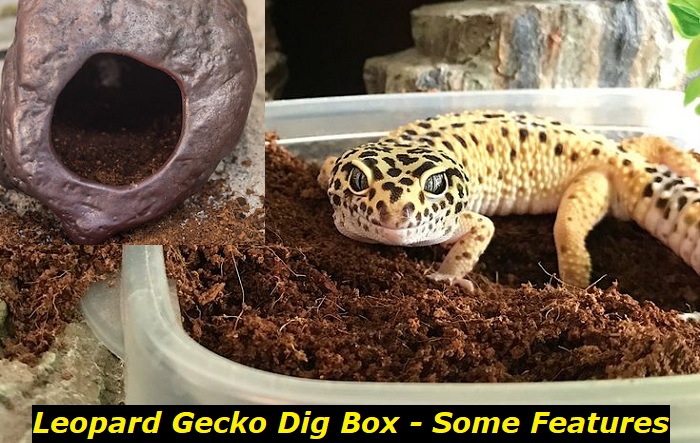
What is a Dig Box?
Also known as a lay box, a dig box is a small and shallow box or container that you fill with a loose substrate to help your leopard gecko exhibit its natural digging and burrowing instincts without being in danger of impaction.
It can be designed anyhow you like. But the defining features of a dig box are that it must be shallow and have a moist and warm substrate.
Why Keep a Dig Box?
Normally, if you keep an enclosure with a loose substrate, there would be no reason to keep a dig box. The loose substrate in the enclosure will serve the same purpose. But if you keep an enclosure without loose substrate, you must provide your pet with a dig box.
There are numerous reasons your leopard gecko needs a dig box. Perhaps, the most significant reason is discomfort. Your pet will naturally bury itself in the moist, loose substrate when it feels uncomfortable because of the light or temperature.
Humidity is another reason your pet will occasionally bury itself in the substrate.
Apart from discomfort from the light, temperature, and humidity level in the tank, your leopard gecko will burrow into the dig box when it is stressed.
This is especially the case when you introduce a new pet into a new enclosure. The dig box can provide a venue to burrow and hide if it feels unsafe or stressed.
Finally, you must keep a dig box if your pet is gravid. In the wild, leopard geckos usually lay eggs in the sand. They instinctively cover their eggs slightly when they lay them. You can expect the same if you keep your gravid leopard gecko in a tank with a loose substrate.
But if you do not use an enclosure with a loose substrate, you will have to provide a dig box for your pet to lay and cover her eggs in it.
However, whether you are buying or constructing your dig box, there are a few things to consider. Some of the most important considerations are discussed below.
Here’s What You Should Consider
1) The age of your leopard gecko
It is trite to always remember that you do not need to keep a dig box if your leopard gecko is younger than 8 months.
You only want to keep a dig box in the enclosure for adult leopard geckos. Keeping hatchlings and juvenile leopard geckos in an enclosure with a dig box would be a mistake. The reason for this rule is the danger of impaction.
As hatchlings and juveniles, your pet is yet to master the taste of the right food. So keeping them in a dig box increases the chances of impaction because they can accidentally eat particles of the loose substrate. Eating the substrate particles will cause a blockage in their intestines and ultimately lead to death.
So you mustn’t leave a dig box in the same enclosure with your hatchling or juvenile. If you want to keep a dig box in the enclosure, your leopard gecko must be at least 8 months old.
2) The substrate
It is important to choose the right substrate. Leopard geckos are indeed endemic to sandy terrains, but using regular sand in the dig box is not advisable.
There is one significant reason you should never use regular sand in the dig box for leopard geckos.
The main reason is that regular sand consists of several tiny insoluble materials, especially rock.
Regular sand will increase the chances of impaction, which can result in death. Remember that leopard geckos usually lick their environment to ex[lore and understand their surroundings.
If your pet ingests some of the tiny rocks that make up regular sand when it eats insects, this can obstruct the process of digestion and ultimately lead to the death of your pet.
You also do not want to use newspapers or paper towels. Providing the dig box will engage your critter’s digging instincts.
Also, the dig box will provide an escape for your pet whenever it feels uncomfortable or threatened since it can burrow itself under the loose substrate.
So, it would be pointless to use newspapers or paper towels since they cannot burrow into them.
You can use Eco Earth or any other good pre-packed bedding. They are usually compressed shredded coconut fibers. There are many controversies about the safety of Eco Earth and every type of loose substrate, as many people argue that all types of loose substrates are bad for leopard geckos.
It is rare to find leopard gecko owners who use Eco Earth and complain about it. In reality, Eco Earth is a great choice for your dig box.
Some complaints about pre-packed beddings like Eco Earth are that they are so small your pet may pick them up when they eat. You can conduct an experiment on this, and you will be shocked that your pet will only eat the offered meal. You can record and replay the experiment in slow motion to confirm this.
Another objection is that these pre-packed beddings could expand if accidentally ingested. The ingestion of the pre-packed bedding will ultimately interfere with the digestion process of the gecko and lead to its death. That is also wrong.
After you follow the instructions of Eco Earth on how to loosen the substrate properly, you can be sure that it will not expand any further than it already has.
You can also experiment to confirm this.
You can leave some of the already expanded pre-packed bedding in a cup and add some water. After adding some water, leave it in a secluded area or by the window. Come back to check in an hour.
You will find that instead of a further expansion, the fibers of the pre-packed bedding have broken down into finer particles. You may also find that the water has evaporated to an extent, but you will not find an increase in the size of the bedding material.
Note:
If you are using pre-packed bedding like Eco Earth, it would be best to ensure that you do not wash it in your kitchen sink. If you do, you will ruin the kitchen pipes, costing you a significant sum in renovations.
Another reason you want to use pre-packed bedding is that it absorbs smell better. This is one problem that people who use newspapers and paper towels deal with.
If you have only one gecko in your enclosure, half a block of Eco Earth is enough to make a dig box. Half a block should also last you for up to six months before the substrate becomes useless.
But you do not have to wait six months before giving the dig box a clean.
3) The quality of the construction material
The quality of the material that your box is made from is also important. DIYers and many newbies in the reptile-keeping hobby may use cardboard boxes to make a dig box for their pet.
While this may work for ferrets and rabbits, it would be a poor choice to work with if you are keeping a leopard gecko.
Leopard geckos burrow themselves into the dig box because they want to escape discomfort in the enclosure. The discomfort they are trying to escape is often related to the temperature in the enclosure and the humidity level.
This means that the moist, loose substrate in the enclosure is the solution to this discomfort. That is why you are advised to always mist the substrate in your dig box whenever it becomes dry.
So, using cardboard to make a dig box for a leopard gecko is impractical. Using a plastic box, a clean metal container, or any other sturdy material that can hold the wet substrate without coming apart would be best.
4) The depth of the dig box
The ideal depth of a dig box should be more than the depth of the substrate. If your dig box is about 4 inches deep, leave the substrate depth at 3 inches. At most, the difference between the depth of the dig box and the substrate should be not more than 1.5 inches.
This measurement is important to ensure that your pet sees the substrate well enough to know what it is. Also, the depth difference will reduce the chances of spillage on the enclosure’s floor when your gecko digs its way into the substrate.
- Dubia Roach Egg Sack: How To Understand if It’s Healthy? - January 2, 2023
- How To Feed African Dwarf Frog While on Vacation? - December 26, 2022
- Baytril for Bearded Dragon: Here’s What You Should Know - December 19, 2022
